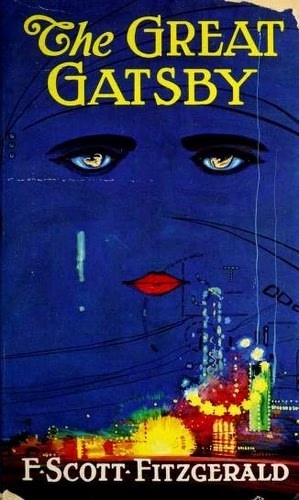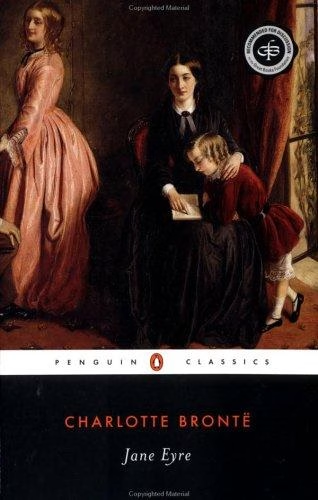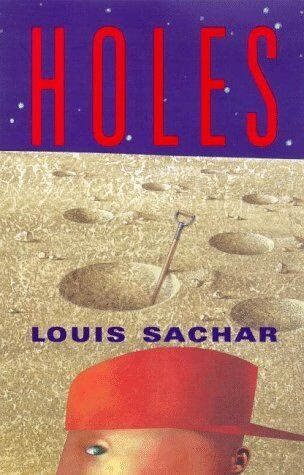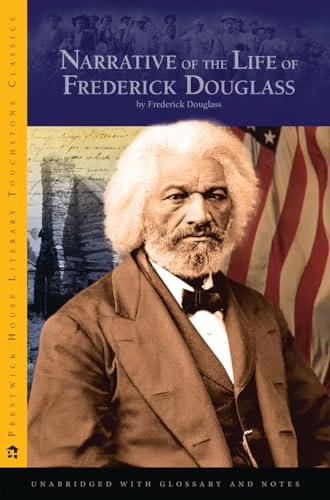Plot Summary
Introduction to the Eggs
The story, set in the summer of 1922, is narrated by Nick Carraway, a young Midwesterner who has moved to New York to work in the bond business. He rents a small house in West Egg, a Long Island community inhabited by the “newly rich.” His next-door neighbor is the mysterious Jay Gatsby, who lives in a colossal mansion and throws extravagant parties every weekend. Across the bay lies the more fashionable East Egg, home to the “old money” aristocracy.
One evening, Nick drives to East Egg to have dinner with his cousin, Daisy Buchanan, and her immensely wealthy husband, Tom. Nick had known Tom in college. At their home, Nick meets Jordan Baker, a cynical and beautiful professional golfer with whom he begins a tentative romance. The dinner is tense and awkward. Tom reveals his brutish, racist, and domineering nature, while Daisy appears flighty and discontented with her life. The evening is interrupted by a phone call for Tom from his mistress in New York, a fact that Jordan reveals to Nick, exposing the deep cracks in the Buchanans’ marriage.
Upon returning home, Nick sees a figure standing on the lawn of the neighboring mansion. It is Gatsby, who stretches his arms out toward the dark water. Nick follows his gaze and sees nothing but a single green light burning at the end of a distant dock.
The Valley of Ashes and the New York Apartment
A few days later, Tom forces Nick to accompany him on a trip to the city. On the way, they stop at a desolate, industrial wasteland between West Egg and New York known as the Valley of Ashes. This grim landscape is watched over by the giant, fading eyes of Doctor T. J. Eckleburg on an old billboard. Here, Tom introduces Nick to his mistress, Myrtle Wilson, a coarse but vibrant woman married to George Wilson, the lifeless owner of a run-down garage.
Tom takes Nick and Myrtle to an apartment he keeps in the city for their affair. They throw a vulgar, drunken party with Myrtle’s sister, Catherine, and a couple named McKee. As the party progresses and the whiskey flows, Myrtle’s behavior becomes more arrogant and loud. She taunts Tom by repeatedly shouting Daisy’s name until he, in a fit of rage, strikes her across the face and breaks her nose. The party dissolves in a chaotic and bloody scene, leaving Nick with a profound sense of disgust.
The Grandeur of Gatsby’s Parties
Nick receives a formal invitation to one of Gatsby’s legendary parties, making him one of the few guests to be explicitly invited. The affair is a spectacle of immense wealth and excess, filled with celebrities, socialites, and uninvited guests who know nothing about their host. Rumors about Gatsby fly wildly: he is a German spy, an Oxford graduate, a war hero, or even a murderer.
Amid the chaos, Nick feels out of place until he runs into Jordan Baker. Together, they search for their host. They eventually find themselves talking to a handsome man of about thirty who speaks with elaborate formality. After a conversation about their shared service in the war, the man reveals himself to be Jay Gatsby. Nick is struck by Gatsby’s captivating smile and his air of detached observance; he stands apart from the wild revelry he orchestrates. Later that evening, Gatsby has a private meeting with Jordan Baker, after which she tells Nick she has just heard something “simply amazing.”
The Past Revealed
As the summer progresses, Nick’s curiosity about Gatsby deepens. Gatsby takes Nick to lunch in the city, driving his magnificent cream-colored car. During the drive, Gatsby tells Nick a story of his past—that he is the son of wealthy, deceased Midwesterners, educated at Oxford, and a decorated war hero. He even produces a medal from Montenegro and a photograph of himself at Oxford to prove it. Despite the evidence, Nick finds the story preposterous and unconvincing.
At lunch, Gatsby introduces Nick to his business associate, Meyer Wolfsheim, a shady figure who proudly wears human molars as cufflinks and is revealed to be the man who fixed the 1919 World Series. This encounter further deepens the mystery around the source of Gatsby’s fortune.
Later, Jordan Baker tells Nick the “amazing” story Gatsby shared with her. Five years earlier, before Daisy married Tom, she was a beautiful young debutante in Louisville, deeply in love with a young officer named Jay Gatsby. They were inseparable, but he was called away to war. Daisy promised to wait for him, but the pressures of her social world and her family’s disapproval led her to marry the enormously wealthy Tom Buchanan. On the eve of her wedding, she got drunk and nearly called it off after receiving a letter, presumably from Gatsby. Jordan reveals that Gatsby bought his mansion in West Egg for the sole purpose of being directly across the bay from Daisy, hoping she would one day wander into one of his parties. The green light Nick saw is at the end of Daisy’s dock.
The Reunion
Gatsby’s entire grand enterprise is finally made clear: it is all an elaborate scheme to win Daisy back. He asks Nick to arrange a meeting by inviting Daisy to his house for tea, without telling her Gatsby will be there. Nick agrees.
The day of the reunion is fraught with nervous tension. Gatsby, terrified of the meeting, has Nick’s lawn mowed and his house filled with an absurd number of flowers. When Daisy arrives, the initial encounter is painfully awkward. Gatsby is stiff and terrified, while Daisy is equally flustered. Nick leaves them alone for half an hour, and when he returns, the atmosphere has completely changed. Daisy is weeping with joy, and Gatsby is glowing with happiness.
Gatsby then invites them next door to his mansion. He gives Daisy a tour, displaying his immense wealth with an almost desperate intensity. He shows her his collection of expensive English shirts, and the sheer, overwhelming sight of them causes Daisy to break down and sob, crying that she’s “never seen such—such beautiful shirts before.” As they look out over the bay, Gatsby tells her that he watches the green light at the end of her dock every night. With their reunion, the symbolic power of the light, once representing an unattainable dream, is now just a light on a dock. The reality of Daisy’s presence begins to clash with the five years of idealized dreaming.
The Confrontation at the Plaza
As Gatsby and Daisy’s affair blossoms, Gatsby stops throwing his parties. He fires his servants to prevent gossip and spends his afternoons with Daisy at his mansion. One sweltering hot day, Nick and Gatsby are invited to lunch at the Buchanans’ house. The tension is palpable. Daisy, with a reckless lack of discretion, openly tells Gatsby that she loves him. Tom, seeing the look that passes between them, realizes the truth of their affair.
In a volatile mood, Tom agrees to Daisy’s suggestion that they all go to the city. The confrontation escalates when Tom insists on driving Gatsby’s car, while Gatsby drives Tom’s coupé with Daisy. On the way, Tom stops for gas at Wilson’s garage. George Wilson, looking physically ill, reveals that he has discovered his wife’s infidelity (though not the man’s identity) and plans to move her west. During this stop, Myrtle Wilson, peering from an upstairs window, sees Jordan Baker in the car with Tom and mistakes her for Daisy, her eyes filling with jealous rage.
The group ends up in a suite at the Plaza Hotel, where the simmering conflict boils over. Tom aggressively confronts Gatsby about his past and his intentions toward Daisy. Gatsby, confident, declares that Daisy never loved Tom and is leaving him for good. He demands that Daisy tell Tom the truth.
Under pressure, Daisy hesitates. She admits that she loved Tom once, but also loved Gatsby.
“Oh, you want too much!” she cried to Gatsby. “I love you now—isn’t that enough? I can’t help what’s past.”
Gatsby’s idealized vision shatters. Seeing his advantage, Tom ruthlessly exposes Gatsby as a bootlegger and criminal associate of Meyer Wolfsheim. Daisy, terrified by the reality of Gatsby’s life and Tom’s raw power, completely withdraws. The dream is over. Tom, victorious, contemptuously sends Daisy and Gatsby back to Long Island together in Gatsby’s car.
The Tragic Accident
As Nick, Tom, and Jordan drive home, they come across a horrific scene in the Valley of Ashes. A car has struck and killed Myrtle Wilson. Michaelis, a neighbor, tells them it was a “death car” that didn’t even stop. Tom realizes with horror that it must have been Gatsby’s yellow car.
Back at the Buchanans’ house, Nick waits outside for a taxi. He finds Gatsby hiding in the bushes. Gatsby reveals that Daisy was driving the car when it hit Myrtle, but he insists he will take the blame. The accident happened in an instant: Myrtle, having had a violent fight with her husband, ran into the road. Daisy, a nervous driver, lost control and was unable to stop. Gatsby is waiting outside to make sure Tom doesn’t harm Daisy. Nick walks to the back of the house and sees Tom and Daisy together in their kitchen. They are not happy, but they are not unhappy either; they are sitting in a state of “natural intimacy,” conspiring together. It is clear that Daisy has retreated back into the security of her marriage with Tom.
The Holocaust
Nick urges Gatsby to go away, but Gatsby refuses to leave Daisy. He tells Nick the true story of his past: he was born James Gatz to poor farmers in North Dakota. Ambitious and full of dreams, he reinvented himself as Jay Gatsby, working for a wealthy yachtsman, Dan Cody, who educated him in the ways of the world. His entire life has been a pursuit of an idealized vision of himself, a vision that became inextricably linked with Daisy.
Meanwhile, George Wilson is spiraling into madness. Consumed by grief, he finds a new, expensive dog leash and concludes that Myrtle’s lover was also her killer. He believes the driver of the yellow car was the man she was having an affair with. Tom, when confronted by a desperate Wilson, tells him that the yellow car belongs to Gatsby.
Wilson, armed with a revolver, makes his way to West Egg. He finds Gatsby relaxing on a mattress in his swimming pool, still waiting for a call from Daisy that will never come. Wilson shoots and kills Gatsby, then turns the gun on himself. The “holocaust” is complete.
The Lonely Funeral
In the aftermath of the murder-suicide, Gatsby’s world dissolves. The press reports are sensationalized and false. Nick finds himself completely alone in defending Gatsby’s memory, as no one else seems to care. Daisy and Tom have disappeared, leaving no address. Meyer Wolfsheim refuses to get involved. The hordes of people who enjoyed Gatsby’s hospitality are nowhere to be found.
Nick arranges Gatsby’s funeral. The only attendees are Nick, Gatsby’s estranged father Henry C. Gatz (who arrives from Minnesota, full of a sad, misguided pride in his son’s success), and, surprisingly, “Owl Eyes,” the man Nick met in Gatsby’s library, who mourns the “poor son-of-a-bitch.”
Epilogue: Beating Against the Current
Disgusted with the moral vacuum and carelessness of the East, Nick decides to move back to the Midwest. Before he leaves, he has a final, cold encounter with Jordan Baker, ending their relationship. He also runs into Tom Buchanan, who shows no remorse for his role in Gatsby’s death. Tom reveals that he was the one who told Wilson that the car belonged to Gatsby, believing it was justified because Gatsby “had it coming to him.” Nick concludes that Tom and Daisy are careless people who smash up things and lives, then retreat into their vast wealth, letting others clean up the mess.
On his last night, Nick goes to Gatsby’s empty mansion and erases an obscene word a boy had scrawled on the steps. He lies on the beach and contemplates the American continent as it must have looked to the first Dutch sailors, a “fresh, green breast of the new world.” He thinks of Gatsby’s dream and the green light, connecting it to the universal human hope for the future.
“Gatsby believed in the green light, the orgastic future that year by year recedes before us. It eluded us then, but that’s no matter—tomorrow we will run faster, stretch out our arms farther…. And one fine morning——”
The novel closes with one of the most famous lines in American literature, a poignant reflection on the struggle of humanity against the pull of the past:
“So we beat on, boats against the current, borne back ceaselessly into the past.”
Characters
Jay Gatsby
The titular character, Jay Gatsby is a profoundly enigmatic and romantic figure. Born James Gatz to a poor farming family, he embodies the American ideal of the self-made man, having reinvented himself from nothing into a fabulously wealthy West Egg millionaire. Gatsby’s motivation is singular and all-consuming: his obsessive love for Daisy Buchanan, a woman he met and fell for five years before the novel begins. His vast fortune, his opulent mansion, and his extravagant parties are all part of a meticulously crafted illusion designed for one purpose—to attract Daisy’s attention and win her back. Gatsby is a character of profound contradictions: he is both a dreamer and a criminal, a man of immense hope and profound naivete. His core conflict lies in his inability to distinguish between the Daisy of his dreams and the real, flawed woman she has become. He believes that wealth can erase the past and recreate it, a tragic flaw that leads to his ultimate destruction.
Nick Carraway
The narrator of the story, Nick Carraway serves as its moral center and observer. He comes from a stable, upper-middle-class Midwestern family and moves to the East to make his fortune, positioning him as both an insider and an outsider in the world of extravagant wealth he encounters. His defining trait, as he states in the opening, is a tendency to “reserve all judgments,” which makes him a confidant for both Gatsby and the Buchanans. As the story progresses, Nick’s initial tolerance gives way to a growing disillusionment. He is simultaneously fascinated by the “gorgeous” personality of Gatsby and repulsed by the moral decay and carelessness of Tom, Daisy, and their social circle. Nick’s evolution is one of lost innocence; he comes to see the glittering world of the Roaring Twenties for what it is—a hollow and destructive force. His ultimate loyalty lies with Gatsby, whom he sees as “worth the whole damn bunch put together” because Gatsby’s corruption was in service of a dream, however misguided, while the others’ was born of pure selfishness.
Daisy Buchanan
Daisy is the “golden girl” of the novel, the object of Gatsby’s lifelong obsession. She is Nick’s cousin and the wife of Tom Buchanan. Raised in a world of wealth and privilege, Daisy is beautiful, charming, and captivating, with a voice that Nick describes as being “full of money.” However, her allure masks a deep-seated spiritual emptiness and moral cowardice. Daisy is torn between the romantic, idealized love offered by Gatsby and the brutal but secure reality provided by Tom. Her primary motivation is the preservation of her own comfort and social standing. While she is genuinely moved by her reunion with Gatsby, she is ultimately unable to abandon the security of her marriage. When forced to choose, she retreats into Tom’s world, allowing Gatsby to take the blame for the car accident she caused, demonstrating her profound and destructive carelessness. She represents the beautiful but unattainable illusion at the heart of Gatsby’s dream.
Tom Buchanan
Tom Buchanan is Daisy’s husband, an immensely wealthy and physically imposing man from an established “old money” family. He is arrogant, hypocritical, and aggressive, embodying the moral corruption of the established elite. Tom is a man of profound insecurities, which manifest as racism, sexism, and a constant need to assert his dominance over others. He is engaged in an affair with Myrtle Wilson but is outraged when he discovers Daisy’s love for Gatsby. His conflict with Gatsby is not just about a woman, but about class and power. He sees Gatsby as an upstart, a “Mr. Nobody from Nowhere,” and is determined to expose him and destroy his challenge to the social order. Tom’s actions directly lead to Gatsby’s death when he tells George Wilson who owns the “death car,” yet he feels entirely justified, demonstrating a complete lack of a moral compass.
Core Themes
The Decline of the American Dream
The Great Gatsby is a profound critique of the American Dream. The traditional dream, rooted in the idea that hard work and virtue can lead to success and self-fulfillment, is shown to be corrupted by the materialism and moral decay of the 1920s. Gatsby embodies a distorted version of this dream. He achieves immense wealth, but he does so through criminal activity (bootlegging), and his goal is not happiness in a general sense, but the recapturing of a past love. The novel suggests that the unrestrained pursuit of wealth has detached the American Dream from its moral foundations, leaving behind a hollow quest for pleasure and status, symbolized by the endless, meaningless parties and the careless lives of the rich. The Valley of Ashes stands as a stark testament to the social decay and poverty that is the byproduct of this reckless pursuit.
The Hollowness of the Upper Class
The novel draws a sharp distinction between “old money” (East Egg) and “new money” (West Egg), but ultimately portrays both as spiritually and morally bankrupt.
* Old Money: The Buchanans represent the established aristocracy. They are idle, cynical, and believe their social standing places them above the rules that govern ordinary people. Their wealth is inherited, not earned, and it shields them from the consequences of their actions.
* New Money: Gatsby represents the newly rich. His wealth is ostentatious and his parties are gaudy, lacking the refined taste of East Egg. He and his guests are seen as vulgar interlopers by the old guard.
Despite their differences, both factions are shown to be careless and destructive. Tom and Daisy “smash up things and creatures” and then retreat into their money, leaving Nick and Gatsby’s father to clean up the mess. The novel exposes their lives of supposed glamour as being devoid of loyalty, love, or integrity.
The Impossibility of Reliving the Past
Gatsby’s entire life is driven by his desire to repeat the past—specifically, to recreate the moment five years earlier when he and Daisy were in love. He cries out to Nick, “Can’t repeat the past? Why of course you can!” This belief is his tragic flaw. He has built an idealized version of Daisy in his mind that the real woman cannot possibly live up to. His dream is not about a future with Daisy, but about erasing the five years in between—including her marriage and child—and restoring a perfect, lost moment. The novel argues that the past is unrecoverable and that clinging to an idealized version of it inevitably leads to disillusionment and destruction. Gatsby’s relentless forward pursuit is, paradoxically, a constant retreat into a past that no longer exists, a struggle captured in the book’s final line: “borne back ceaselessly into the past.”
Plot Devices
Symbolism
Fitzgerald employs powerful symbols to imbue the narrative with deeper meaning.
* The Green Light: Burning at the end of Daisy’s dock, the green light is the most important symbol in the novel. Initially, it represents Gatsby’s deep-seated hope and his dream of reuniting with Daisy. It is a distant, tantalizing promise of a perfect future. After their reunion, the light loses its “colossal significance” for Gatsby, becoming just a light on a dock. For Nick, however, it evolves into a larger symbol of the “orgastic future” and the unattainable American Dream that people strive for.
* The Valley of Ashes: This is the grim, desolate wasteland between West Egg and New York City. It represents the moral and social decay hidden beneath the glittering surface of the Jazz Age. It is the home of the poor, like George Wilson, who are consumed and destroyed by the reckless actions of the rich. It symbolizes the forgotten underbelly of the American Dream.
* The Eyes of Doctor T. J. Eckleburg: The fading, bespectacled eyes on a billboard overlooking the Valley of Ashes are a symbol of a detached, un-caring god. They witness the novel’s most tragic events—Myrtle’s affair, her death, Wilson’s grief—without judgment or intervention. For the grief-stricken Wilson, they become the eyes of God, who “sees everything,” but the reader understands they are merely an advertisement, signifying a world where morality is absent and observation has replaced divine justice.
Unreliable First-Person Narration
The story is told entirely from the perspective of Nick Carraway, making him a classic unreliable narrator. While he strives for objectivity and claims to “reserve all judgments,” his perceptions are inevitably shaped by his own background, biases, and evolving moral stance. His romantic admiration for Gatsby colors the reader’s view of him, portraying him more as a tragic hero than a common criminal. Conversely, his growing disgust for Tom and Daisy casts them in an irredeemably negative light. Nick is not present for many key events—such as the fatal car crash or Tom’s conversation with Wilson—and must piece them together from secondhand accounts. This narrative technique forces the reader to question the absolute truth of the events and to see the story through the filter of Nick’s personal, and ultimately judgmental, lens.





